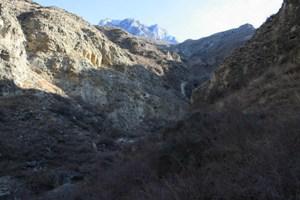Yury Yarovenko
Other projects
27 Aug 2009
Population Ecology of the Leopard (Panthera pardus) in Dagestan, Russian North Caucasus
15 Feb 2011
GIS Mapping of Habitats and Further Field Research to Identify the Priority Leopard (Panthera pardus) Areas in Dagestan, Russian North Caucasus
This project aims at obtaining reliable and first-hand information about leopard presence and distribution in the mountains of Dagestan (south-eastern Caucasus, Russia)

The leopard is situated atop the food pyramid and belongs to indigenous wildlife of mountainous habitats of the Caucasus. Its disappearance or rarity destroys ecosystems, particularly by bringing more wolves to the freed niche. Thus, packs of wolves which kill 20-30 sheep per hunt substitute solitary leopards which harvest 1 prey per hunt. Making this fact widely known to rural people will definitely serve a firm ground for clear understanding of the economic benefit of leopards to local animal husbandry in comparison with wolves which terrorize animal breeders. This issue is important for Dagestan holding 1.5 million heads of small livestock.

Sufficiency of wild prey base (16000-18000 Dagestan turs and ca. 2000 bezoar goats) and domestic sheep stock represents an optimal condition for leopard existence in Dagestan (Akhmedov, 1995; Nasrulaev & Akhmedov, 2000).
The highlanders of Dagestan have been historically respectful to the leopard for its intrepid and cunning behaviour. However, only handful of people still believes in survival of this cat here. We will widely communicate with rural communities (the elderly, schoolchildren, district administrations) and spread information in local newspapers, radio and scientific press so that to raise public awareness about the leopard.